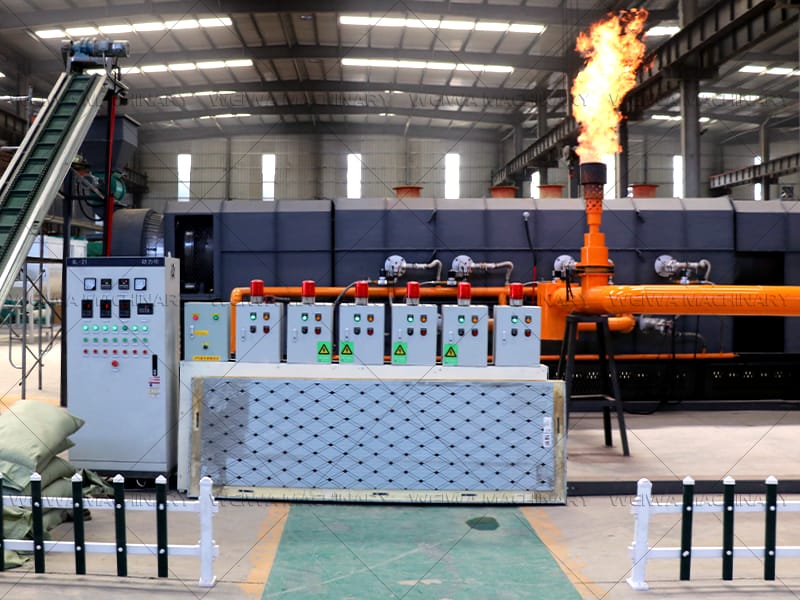Introduction to 連續碳化爐 Technology
The continuous carbonization furnace has revolutionized biomass waste recycling, particularly for materials like palm shell, 椰子殼, 和木屑. Unlike traditional batch-type furnaces, a continuous carbonization furnace allows for uninterrupted processing, improving efficiency, reducing energy consumption, and ensuring consistent product quality.
How Does a Continuous Carbonization Furnace Work?
acontinuous carbonization furnace operates by feeding biomass material (such as palm shell) into the furnace at a controlled rate while maintaining high temperatures (typically 400–600°C). The process involves:
1. Drying Stage
The raw material enters the preheating zone, where moisture is removed to prepare it for carbonization.
2. Carbonization Stage
Once dried, the material moves into the high-temperature zone, where pyrolysis occurs, breaking down organic compounds into charcoal, bio-oil, and syngas.
3. Discharge and Cooling
The carbonized product is continuously discharged while being cooled to prevent re-oxidation.
This continuous process eliminates the need for repeated loading and unloading, making it highly efficient for industrial-scale operations.
Why Palm Shell is an Ideal Feedstock for Carbonization
Palm shell, a byproduct of palm oil production, is widely available in Malaysia and Southeast Asia. Its high carbon content (~45-50%) and low ash make it an excellent material for producing high-quality charcoal.
Advantages of Using Palm Shell:
- Abundant supply in Malaysia
- High calorific value after carbonization
- Low moisture content (reduces pre-treatment needs)
- Eco-friendly waste recycling
Our Malaysian client chose palm shell as their primary feedstock due to its availability and profitability in the charcoal market.
Case Study: Malaysian Client’s Successful Trial at Weiwa Machinery
Recently, a client from Malaysia visited our factory to test our continuous carbonization furnace with palm shell. Here’s how the trial went:
1. Pre-Trial Preparation
Before the test, we discussed the client’s requirements, including:
- Desired carbonization temperature
- Expected output capacity
- Fuel source (gas or biomass)
2. The Trial Process
The client brought palm shell samples, and we loaded them into the furnace. Key observations included:
- Stable temperature control (maintained at 500°C)
- Smooth feeding and discharge (no blockages)
- High-quality charcoal output (low ash, high fixed carbon)
3. Post-Trial Feedback
The client was impressed with:
- Efficiency (continuous operation vs. batch processing)
- Low energy consumption
- Ease of operation
This successful trial reinforced our furnace’s reliability for palm shell carbonization in Malaysia.
Factors Influencing Continuous Carbonization Furnace Price
When considering a continuous carbonization furnace, price is a key factor. 然而, it’s essential to evaluate:
1. 容量 & 尺寸
Larger furnaces (higher output) cost more but offer better economies of scale.
2. Automation Level
Fully automated systems with PLC controls command a premium but reduce labor costs.
3. Fuel Type
Gas-fired furnaces are cleaner but may cost more upfront than biomass-fired ones.
4. After-Sales Support
Our furnaces include installation guidance and maintenance support, adding long-term value.
For our Malaysian client, we provided a cost-effective solution tailored to their production needs.
關於 WEIWA機械
在WEIWA機械, 我們專門研究biomass carbonization solutions, 包括連續碳化爐 for palm shell, 椰子殼, and wood waste. With years of experience in Southeast Asia, we provide:
- Customized furnace designs
- On-site installation support
- Efficient after-sales service
Our mission is to help clients turn waste into valuable resources while promoting sustainable practices.





 微信
微信

 +8613838093177
+8613838093177